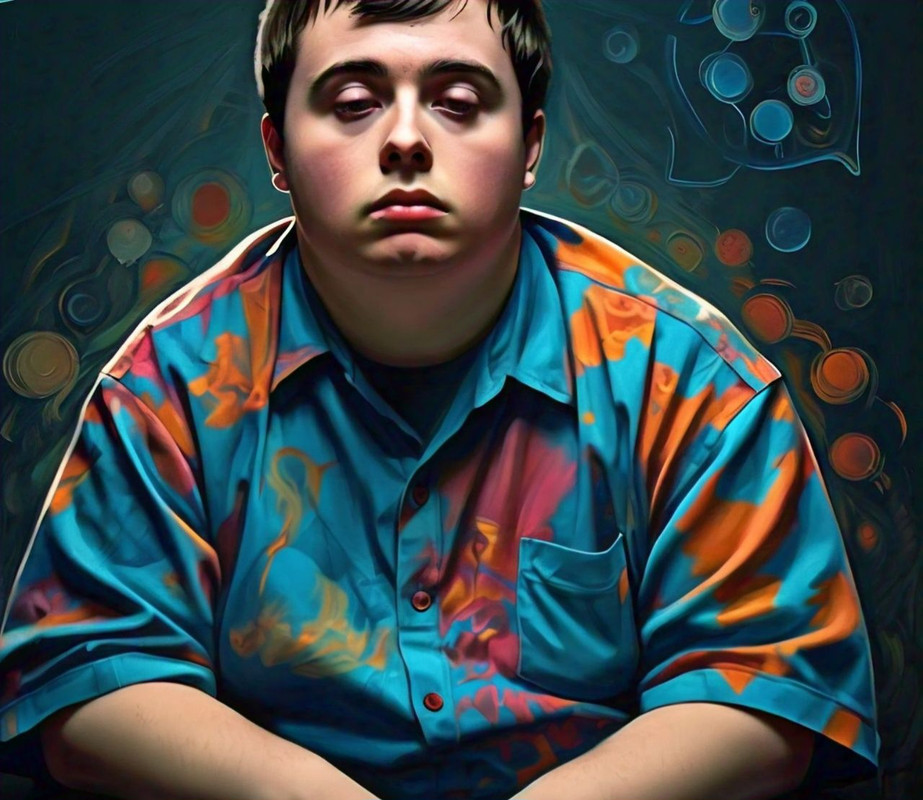Comprehensive Overview of Autism
Symptoms, Causes and Treatments..
Genamie Rotimi
Autism...|| 22 Aug, 2024

Note: The image above is an AI-generated potrait that best depicts one encountering autism. Visit an autism organisation for indepth/concise descriptions and or, looks. People with autism are all around us, and you may not even notice it.
WHAT IS AUTISM?
Autism, or autism spectrum disorder (ASD), is a neurodevelopmental condition characterized by challenges with social skills, repetitive behaviors, speech, and non-verbal communication. ASD is a broad spectrum, meaning that it affects individuals differently, with varying degrees of intensity. People with autism may have a wide range of strengths and challenges, influencing how they learn, think, and problem-solve.
Autism is found globally, across all racial, ethnic, cultural, and economic backgrounds. Some individuals with ASD may require significant support in their daily lives, while others may live independently and even excel in their careers—much like the fictional character Shaun from "The Good Doctor."
Several factors contribute to the development of autism, and it is often accompanied by sensory sensitivities and other medical issues, such as gastrointestinal disorders, seizures, and sleep disorders. Additionally, individuals with autism may experience mental health challenges, including anxiety, depression, and attention issues.
WHAT ARE THE SYMPTOMS OF AUTISM?
Autism is diagnosed based on behavior and developmental history, as there are no medical tests (such as blood tests or brain imaging) specifically for ASD. The symptoms of autism vary widely, as it is a spectrum disorder, but they typically become noticeable by age 2 or 3. However, some developmental delays associated with autism can appear even earlier, sometimes as early as 18 months.
The DSM-5 (Diagnostic and Statistical Manual of Mental Disorders, Fifth Edition) categorizes the symptoms of ASD into two main categories:
- Problems with communication and social interactions
- Restricted or repetitive patterns of behavior or activities
For an individual to be diagnosed with autism, they must exhibit symptoms in both categories.
Problems with Communication and Social Interaction
ASD can involve a range of difficulties with communication, many of which become apparent before age 5. Here's a general timeline of possible signs:
- From birth: Difficulty maintaining eye contact.
- By 9 months: Not responding to their name; lack of facial expressions reflecting emotions like surprise or anger.
- By 12 months: Not engaging in basic interactive games like peek-a-boo; limited use of hand gestures (e.g., waving).
- By 15 months: Not sharing interests with others (e.g., showing someone a favorite toy).
- By 18 months: Not pointing or following where others point.
- By 24 months: Not noticing when others are sad or hurt.
- By 30 months: Difficulty engaging in pretend play (e.g., caring for a doll).
- By 36 months: Trouble expressing their feelings or understanding the feelings of others.
- By 60 months: Difficulty playing turn-taking games.
As children with autism age, they may develop language skills at an uneven pace. For example, they might develop a strong vocabulary in a topic of interest but struggle with broader communication. Some may exhibit hyperlexia, where they can read beyond their age level but struggle with comprehension.
Non-verbal communication challenges, such as difficulty maintaining eye contact or interpreting body language, may persist into adulthood.
Restricted or Repetitive Patterns of Behavior or Activities
Individuals with autism may display symptoms related to body movements and behavior, including:
- Repetitive movements, such as rocking, flapping arms, spinning, or running back and forth.
- Lining up objects in strict orders and becoming upset when the order is disturbed.
- Attachment to strict routines, such as those around bedtime or daily schedules.
- Repeating words or phrases they hear repeatedly (echolalia).
- Becoming distressed by minor changes in their environment.
- Intense focus on specific parts of objects, like the wheels of a toy truck.
- Unusual reactions to sensory inputs, such as sounds, smells, or tastes.
- Obsessive interests in particular topics or objects.
- Exceptional abilities, such as musical talent or extraordinary memory skills.
STIMMING
"Stimming" refers to self-stimulating behaviors often involving repetitive motions or speech, such as hand-flapping, rubbing an object, or repeating a phrase. Although stimming is commonly associated with autism, nearly everyone engages in some form of stimming, such as biting nails or tapping fingers.
For individuals with autism, stimming can sometimes interfere with daily life or even cause physical harm. However, it can also serve as a helpful coping mechanism for managing sensory overload or stressful situations.
What Are the Causes of Autism?
Autism spectrum disorder is not a disease or illness, so there is no single known cause. Research indicates that genetics and environmental factors both play roles in the development of autism.
Is Autism a Disorder or a Disability?
To understand autism better, it's essential to differentiate between a disorder and a disability:
- Disorder: A health condition that affects the typical functions of the mind and body. Autism is considered a mental disorder because of its neurological, psychological, and social impacts.
- Disability: A condition of the body or mind that makes it more challenging for the person to perform certain activities or interact with the world. Legally, autism is considered a disability, making individuals with ASD eligible for protections under the Disabilities Act.
Medically, autism is viewed as a disorder, while legally, it is seen as a disability. However, self-identification varies, and some individuals may not identify as disabled or disordered.
Conclusion: Autism is a complex and broad condition that requires ongoing research and understanding. The more we learn, the more we realize its complexity. This article is part of a series, where future discussions will delve deeper into various aspects of autism.
DON'T FORGET TO LIKE, COMMENT & SHARE
Kolade Philip O.
Editor/Updater